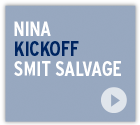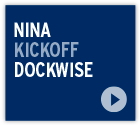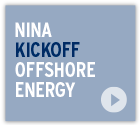NINA at Work articles
- Number 2 / 2024
- Number 1 / 2024
- Number 2 / 2023
- Number 1 / 2023
- Number 3 / 2022
- Number 2 / 2022
- Number 1 / 2022
- Number 3 / 2021
- Number 2 / 2021
- Number 1 / 2021
- Number 1 / 2020
- Number 4 / 2019
- Number 3 / 2019
- Number 2 / 2019
- Number 1 / 2019
- Number 4 / 2018
- Number 3 / 2018
- Number 2 / 2018
- Number 1 / 2018
- Number 6 / 2017
- Special edition / 2017
- Number 4 / 2017
- Number 3 / 2017
- Number 2 / 2017
- Number 1 / 2017
Media Library
TestimonialVideosNews Items
“I WANT TO GET A FEEL FOR A COMPANY."
THAT’S WHY I ALWAYS GO THERE.”
Bart Meijering, (SMIT Salvage) salvage master, on selecting a subcontractor:
“When I’m looking for a subcontractor, I always go there myself: How does the company look? What kind of people work there? I speak with the management; ask about their track record, quality system, risk assessments."
"This quickly gives you a sense of whether you’re dealing with competent people. Or, if they are less competent, where the risks lie and whether we can resolve this. You develop that sense with experience. And if I lack that experience, I look for someone within the organisation who can support me. I always ask about a subcontractor’s safety system and I introduce them to NINA. But I won’t impose anything on them. It is about good, safe collaboration in an open atmosphere.”
“I MAKE ADJUSTMENTS FOR A SUBCONTRACTOR BASED ON FEEDBACK FROM OUR PEOPLE. IN EXTREME CASES, I SEND THEM AWAY. I HAVE DONE THAT BEFORE: IF PEOPLE IN FLIP-FLOPS COME WITH DAMAGED WELDING CABLES, THAT’S A BRIDGE TOO FAR. ”
What is your experience with the safety consciousness of subcontractors?
“I rarely find that a subcontractor has our level of safety consciousness. I did in the United Kingdom, where I’ve just finished a job. We found good divers and welders there, and that was one big thing less to worry about. But in Angola for example, it is virtually impossible to find good subcontractors. I’d be lying if I said it didn't keep me up at night. Because my experience is that if it goes wrong, it often goes wrong in that area. It’s our job to assess and minimise risks. Unfortunately, working with subcontractors often means making compromises with regard to safety.”
How far do you go then?
“As far as is acceptable. Look, I can provide good PPE, guidance on site, and training. Whether that is enough is shown in practice. It’s up to the people on site to make the call. They give me feedback I can use to make adjustments, for example by providing more guidance or reducing the scope of the subcontractor’s work. In extreme cases, you send someone away. But then you have to have an alternative, because the work still needs to get done. That is the dilemma you’re faced with. Because in the same way as you expect the ambulance to come if you call 112, the client expects us to get the job done when they call us. Because we are the last ones they can call.”






